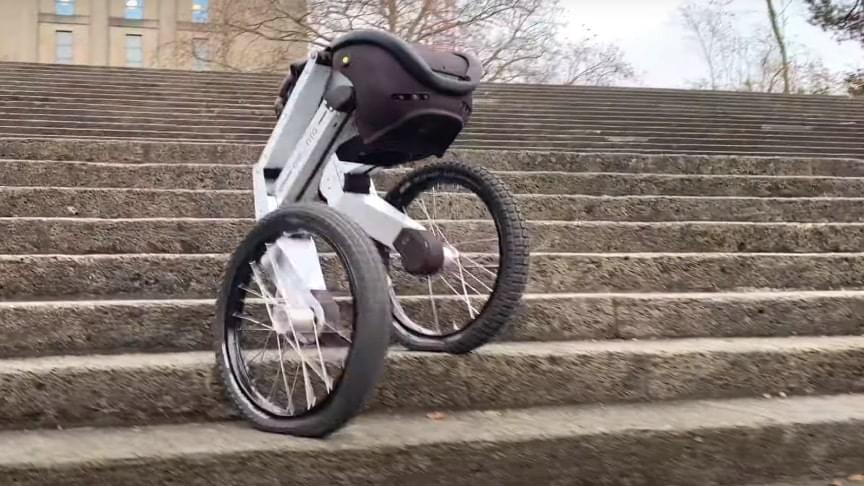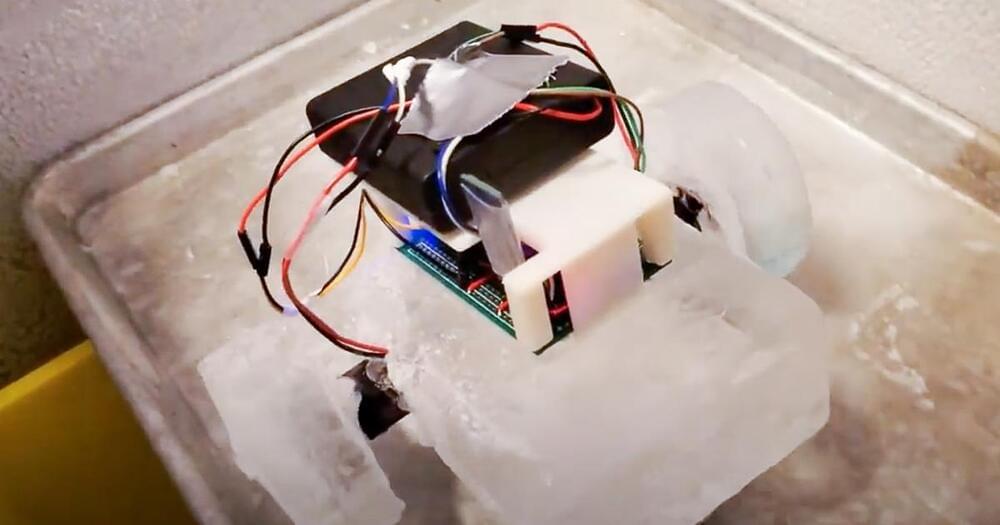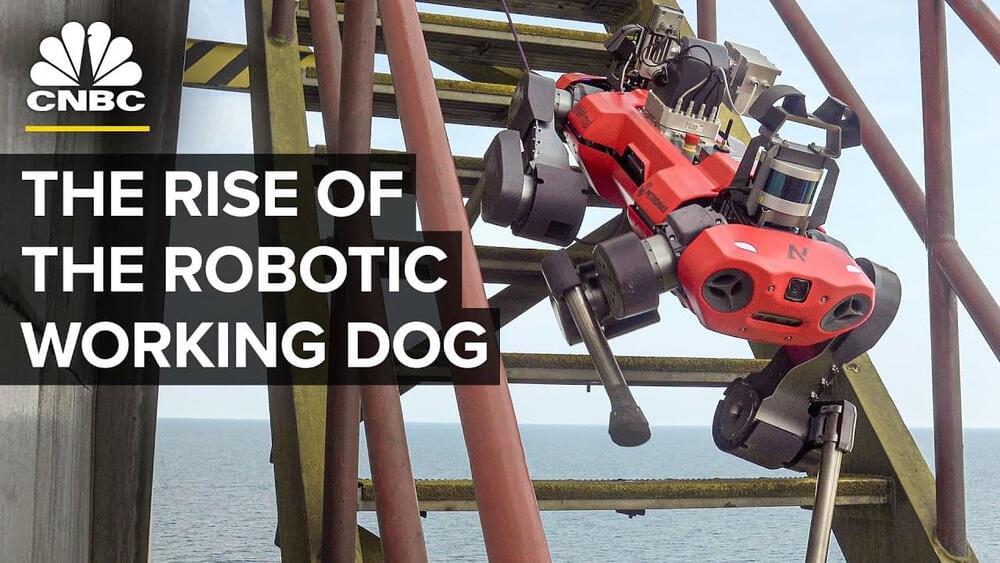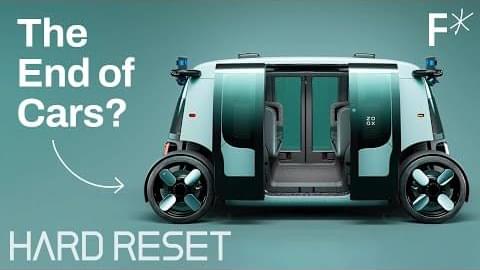Ethical training database paves the way for AI systems to be pretrained in human values.



A robot avatar that mimics the motions of a human controller could take the place of workers in several dangerous jobs, such as tree trimming and construction, by the end of 2022.
The challenge: If a tree branch gets too close to a power line, it can cause electrical outages or, even worse, dangerous fires (as Californians know all too well). To avoid this, utility companies have to regularly trim trees near their lines.
But it’s dangerous work, as workers are dozens of feet above the ground, using sharp power tools to trim trees while power lives are still active — this puts them at risk of falls, cuts, and electrocution, all at once.

Bigger, faster, stronger: This is Ascento Pro! Our newest creation can climb full flights of stairs, drive at up to 12km/h and all this for up to 8h per battery charge. Oh and also it is now autonomous. Full autonomy is achieved through LiDAR, onboard cameras and LED headlights.
source/image(PrtSc): Ascento Robotics

A team of researchers want to build robots out of ice and send them to space. The idea is that — lacking a local repair shop — the icy bots can use found materials to rebuild themselves.
Ice can be located all over the solar system, from the moon to the distant rings around Saturn. So researchers from the University of Pennsylvania are trying to figure out how to tap into that nearly unlimited resource for robotics.
NASA wants to send the robot dog, Spot, to space. The canine-bot can do many tricks — from herding sheep to helping the NYPD in a hostage situation — but it likely won’t be able to repair itself. Where could it find enough materials to do the job?

Drug-target interaction is a prominent research area in drug discovery, which refers to the recognition of interactions between chemical compounds and the protein targets. Chemists estimate that 1,060 compounds with drug-like properties could be made—that’s more than the total number of atoms in the Solar System, as an article reported in the journal Nature in 2017.
Drug development, on average, takes about 14 years and costs up to 1.5 billion dollars. During the journey of drug discovery in this vast “galaxy,” it is apparent that traditional biological experiments for DTI detection are normally costly and time-consuming.
Prof. Hou Tingjun is an expert in computer-aided drug design (CADD) at the Zhejiang University College of Pharmaceutical Sciences. In the past decades, he has been committed to developing drugs using computer technology. “The biggest challenge lies in the interactions between unknown targets and drug molecules. How can we discover them more efficiently? This involves a new breakthrough in method.”

Brought up to speed, the robotic chef can churn out a pizza every 45 seconds.
Back in January of 2020, we brought you news of a pizza-making robot from a Seattle-based company called Picnic.
The system was small enough to fit in any commercial kitchen without any retrofitting. The base modules were only 2 feet (61 cm) wide, making them highly portable and easy to fit on food trucks. The robot was set to revolutionize the food industry.
Now, a new pizza-making robot has been launched, this time by three ex-SpaceX engineers: Benson Tsai, Brian Langone, and James Wahawisan. The pizzeria is called Stellar Pizza and it can make, bake and top a pizza in under five minutes, according to Business Insider.
A pepperoni or supreme pizza is amongst the choices offered by Stellar Pizza and customers can even conceive their own pizza with toppings that include onions, bacon, chicken, and olives.
Full Story:

A number of four-legged robot dogs made by companies like Boston Dynamics, Anybotics and Ghost Robotics have been deployed in the workforce already for applications like inspections, security and public safety among others. At their core, these four-legged robots are mobility platforms that can be equipped with different payloads depending on the type of information that companies want to gather.
Experts predict the insurance industry alone will spend $1.7 billion on robotics systems in 2025. And other industries may follow suit. Amid the pandemic, a tight job market is forcing many companies to turn to automation. A survey done in December of 2020 by McKinsey, showed that 51 percent of respondents in North America and Europe said they had increased investment in new technologies during 2020, not including remote-work technologies.
» Subscribe to CNBC: https://cnb.cx/SubscribeCNBC
» Subscribe to CNBC TV: https://cnb.cx/SubscribeCNBCtelevision.
» Subscribe to CNBC Classic: https://cnb.cx/SubscribeCNBCclassic.
About CNBC: From ‘Wall Street’ to ‘Main Street’ to award winning original documentaries and Reality TV series, CNBC has you covered. Experience special sneak peeks of your favorite shows, exclusive video and more.
Connect with CNBC News Online.
Get the latest news: https://www.cnbc.com/
Follow CNBC on LinkedIn: https://cnb.cx/LinkedInCNBC
Follow CNBC News on Facebook: https://cnb.cx/LikeCNBC
Follow CNBC News on Twitter: https://cnb.cx/FollowCNBC
Follow CNBC News on Instagram: https://cnb.cx/InstagramCNBC
#CNBC

✅ Instagram: https://www.instagram.com/pro_robots.
You are on the PRO Robots channel and in this form we present you the high-tech news. Flying humanoids, aerotaxi from the mayonnaise manufacturer Sloboda, Neuralink chip testing on people, new smart augmented reality glasses, nimble robots, new robots and other most interesting news from the world of technology in one release!
0:00 In this video.
0:25 A prototype of an unmanned air cab from the Sloboda brand.
1:29 Neuralink hopes to get approval for its brain chips soon.
1:55 Paris cab operator G7 has suspended Tesla Model 3 rides.
2:20 Hyundai has announced a robot with a great vestibular system.
3:16 Sony also unveiled a variant of the robot car.
3:51 American startup Stoke Space.
4:31 FarmHand robot arm.
5:25 An electroplane with bird legs and a tilting cockpit.
6:17 A competition, to teach any robot the stupidest, most inefficient, or weirdest gait.
6:47 The iRonCub research platform.
7:39 Air Glass augmented reality glasses.
8:45 Huawei to introduce its smart glasses with interchangeable lenses and Smart Glass speakers built into the temples.
9:06 Ray-Ban Stories smart glasses.
9:35 Swiss startup Ascento Robotics.
10:20 U.S. military has developed special software to predict China’s response.
10:48 Car thieves started using Apple’s AirTag.
11:11 Cray X carbon fiber exoskeleton.
11:54 Returning samples from Mars.
12:28 China’s first manned mission to the moon.
13:08 The U.S. Federal Trade Commission has filed a case against Mark Zuckerberg’s company Meta.
14:02 Happy New Year.
#prorobots #robots #robot #future technologies #robotics.
More interesting and useful content:
✅ Elon Musk Innovation https://www.youtube.com/playlist?list=PLcyYMmVvkTuQ-8LO6CwGWbSCpWI2jJqCQ
✅Future Technologies Reviews https://www.youtube.com/playlist?list=PLcyYMmVvkTuTgL98RdT8-z-9a2CGeoBQF
✅ Technology news.
https://www.facebook.com/PRO.Robots.Info.
#prorobots #technology #roboticsnews.

France’s Jean Zay supercomputer, one of the most powerful computers in the world and part of the Top500, is now the first HPC to have a photonic coprocessor meaning it transmits and processes information using light. The development represents a first for the industry.
The breakthrough was made during a pilot program that saw LightOn collaborate with GENCI and IDRIS. Igor Carron, LightOn’s CEO and co-founder said in a press release: “This pilot program integrating a new computing technology within one of the world’s Supercomputers would not have been possible without the particular commitment of visionary agencies such as GENCI and IDRIS/CNRS. Together with the emergence of Quantum Computing, this world premiere strengthens our view that the next step after exascale supercomputing will be about hybrid computing.”
The technology will now be offered to select users of the Jean Zay research community over the next few months who will use the device to undertake research on machine learning foundations, differential privacy, satellite imaging analysis, and natural language processing (NLP) tasks. LightOn’s technology has already been successfully used by a community of researchers since 2018.
